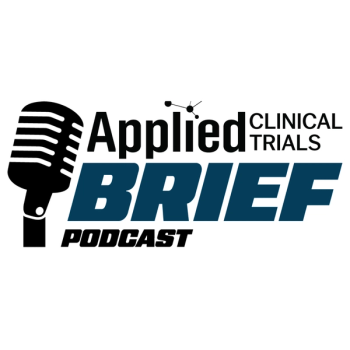“These long-term data show that Tremfya has set a new benchmark as the only IL-23 inhibitor proven to inhibit structural damage in active psoriatic arthritis, which can develop in up to 30% of people living with psoriasis."
APEX Trial Shows Durable Efficacy, Structural Protection With Tremfya in Active Psoriatic Arthritis
Key Takeaways
- Tremfya shows sustained efficacy in inhibiting radiographic progression and improving clinical symptoms in active PsA over 48 weeks.
- The APEX trial supports Tremfya's potential as an early, structural-sparing therapy for PsA, enhancing its therapeutic profile.
New 48-week results from the Phase IIIb APEX trial show Tremfya delivers sustained radiographic protection and deeper clinical responses in active psoriatic arthritis, reinforcing its potential as an early, structural-sparing therapy.
New 48-week data from the Phase IIIb APEX trial (NCT04882098) show Tremfya (guselkumab; Johnson & Johnson) produces sustained inhibition of radiographic progression and improved clinical symptoms in patients with active psoriatic arthritis (PsA).1,2
Tremfya sustains 48-week structural damage inhibition in Phase IIIb Apex trial
Investigators noted that these findings, presented at the 2025 Inflammatory Skin Disease Summit, demonstrate the potential role of Tremfya as an early, structural-sparing therapy as the company seeks to expand the drug’s U.S. label.
“Psoriatic arthritis is a chronic condition where joint damage can begin early and progress quickly if left untreated,” APEX study investigator Christopher Ritchlin, MD, MPH of the University of Rochester Medical Center, said in a press release. “The APEX study results show that guselkumab can inhibit this process, even once it has begun, making it a valuable treatment option for both initiating treatment early and for patients who already show signs of joint damage.”1
Tremfya mechanism of action and current approvals
- Tremfya was the first FDA-approved, fully-human, dual-acting monoclonal antibody that blocks interleukin (IL)-23 by attaching to the p19 subunit of IL-23, and to CD64, a receptor on cells that produce IL-23, which contributes to the pathogenesis of inflammatory diseases.
- The FDA has previously approved Tremfya for the treatment of adults with active PsA; for adults with moderate-to-severe plaque psoriasis who are candidates for systemic therapy or phototherapy; for adults with moderately to severely active ulcerative colitis; and for adults with moderately to severely active Crohn disease.3
APEX trial design and patient population
- The multicenter, randomized, double-blind, placebo-controlled APEX trial enrolled patients with active PsA who did not receive prior treatment with biologic drugs or who showed an inadequate response to standard therapies, such as conventional synthetic disease-modifying antirheumatic drugs, apremilast, and/or nonsteroidal anti-inflammatory drugs.
- The trial included a 24-week, double-blind, placebo-controlled period, a 24-week active treatment period, and a 12-week safety follow-up period.
- For the trial’s long-term extension, patients were administered an additional two years of active treatment prior to the final safety follow-up.
- The trial’s primary endpoint is percentage of participants achieving an American College of Rheumatology (ACR) 20 response at week 24, with secondary endpoints that included change from baseline in PsA modified van der Heijde-Sharp (vdH-S) total score at week 24, as well as various safety and tolerability measures.
- Enrollment criteria included having a diagnosis of PsA for at least six months prior to first administration of Tremfya; presence of active PsA defined as at least three swollen joints and three tender joints at screening and baseline and C-reactive protein greater than or equal to 0.3 milligrams per deciliter at screening; greater than or equal to two joints with erosions on baseline radiographs of the hands and feet as determined by central read; at least one of either distal interphalangeal joint involvement, polyarticular arthritis without rheumatoid nodules, arthritis mutilans, asymmetric peripheral arthritis, or spondylitis with peripheral arthritis; presence of active plaque psoriasis with at least one psoriatic plaque of greater than or equal to two centimeters in diameter or nail changes consistent with psoriasis.2
Previously reported Apex trial 24-week findings
- Twenty-four week data released in June 2025 show Tremfya significant slowed joint structural damage progression in patients with active PsA, with two and a half times greater efficacy in slowing joint structural damage compared to placebo, including joint erosions and space narrowing, as assessed by the vdH-S score.4
New 48-week data and crossover patient outcomes
- The newly released data show this efficacy was sustained for 48 weeks and was consistent across patients with active PsA administered Tremfya every four weeks or every eight weeks.
- Among patients randomly assigned to receive placebo who then switched to Tremfya at week 24, the radiographic progression from baseline to week 24 (0.96) decreased by 57% (0.41) from week 24 to week 48, as per mean change in PsA-modified vdH-S score.
- Approximately half of patients randomly assigned to receive placebo who switched to Tremfya at week 24 were able to achieve ACR50 by week 48.
“These long-term data show that Tremfya has set a new benchmark as the only IL-23 inhibitor proven to inhibit structural damage in active psoriatic arthritis, which can develop in up to 30% of people living with psoriasis,” Leonard Dragone, MD, PhD, vice president, Rheumatology and Autoantibody Disease Area Leader, Johnson & Johnson Innovative Medicine, said in the release. “It’s durable efficacy and established safety make Tremfya an attractive first-line treatment option for patients with psoriatic disease.”1
References
1. New long-term data reinforces TREMFYA® (guselkumab) as the only IL-23 inhibitor proven to substantially inhibit structural joint damage in active psoriatic arthritis. News release. Johnson & Johnson. November 17, 2025. Accessed November 20, 2025.
2. A Study of Guselkumab in Participants With Active Psoriatic Arthritis (APEX). ClinicalTrials.gov. Updated November 7, 2025. Accessed November 20, 2025.
3. Tremfya (guselkumab) real-world data analyses show greater treatment persistence than IL-17s in both bio-naïve and bio-experienced patients living with moderate to severe plaque psoriasis. News release. Johnson & Johnson. March 17, 2023. Accessed November 20, 2025.
4. New data show TREMFYA® (guselkumab) is the only IL-23 inhibitor proven to significantly inhibit progression of joint structural damage in active psoriatic arthritis. News release. Johnson & Johnson. June 11, 2025. Accessed November 20, 2025.
Newsletter
Stay current in clinical research with Applied Clinical Trials, providing expert insights, regulatory updates, and practical strategies for successful clinical trial design and execution.







.png)



.png)



.png)
.png)
